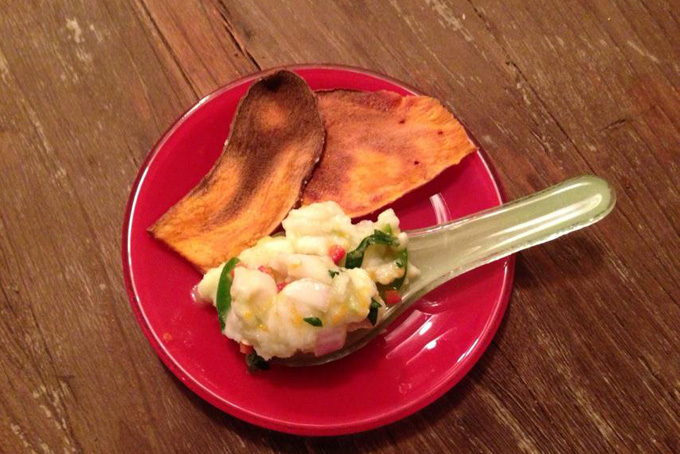
Dinner on a red plate (CNN Photo/Kim Wilderspin)
(CNN) — As the holidays roll around, some of us can’t wait to pile our plates with cookies, candy and family favorites.
But if you’re feeling overwhelmed by seasonal excess, try focusing on the color red. According to a new study, people tend to eat — or use — less of things presented on red dishes, whether it’s chocolate or hand cream.
Background
If eating habits and color were on Facebook, their relationship status would be “it’s complicated.”
Previously, scientists found diners at a pasta buffet heaped the marinara on if they used white plates, but took smaller helpings if their plates were red. They did the opposite when the pasta had a white sauce. So researchers thought the key to eating less might be sharp color contrasts.
But the new study, published in the journal Appetite this month, indicates it’s not contrast, but one specific color — red — that causes people to cut back on what they consume. The research tested how much food or hand cream people used when the product was placed on a red, white or blue plate.
“We wanted to find out if the effect was limited to eating or generalized to other types of consumption. The cream was a convenient way to evaluate another sensory system — touch, rather than taste,” said study author Nicola Bruno, cognitive psychology researcher at the University of Parma, Italy.
The study
In the new study, volunteers rated the saltiness of popcorn, nuttiness of chocolate and stickiness of hand cream.
Each person received a pre-measured sample of a product on a plate that was one of three colors — red, white or blue. The volunteers munched and moisturized as much as they liked while they filled out their answers. Of the 240 participants, 90 taste-tested popcorn, and 75 each sampled the chocolate chips and hand cream.
Each survey also included a question to check how much testers liked the product, since this may have triggered them to eat or use more. After the experiments, researchers measured how much the testers had consumed.
The authors also measured differences in the color intensity and contrasts of foods, cream and plates. Data in hand, they tested whether differences in people’s consumption correlated with differences in color contrast.
Results